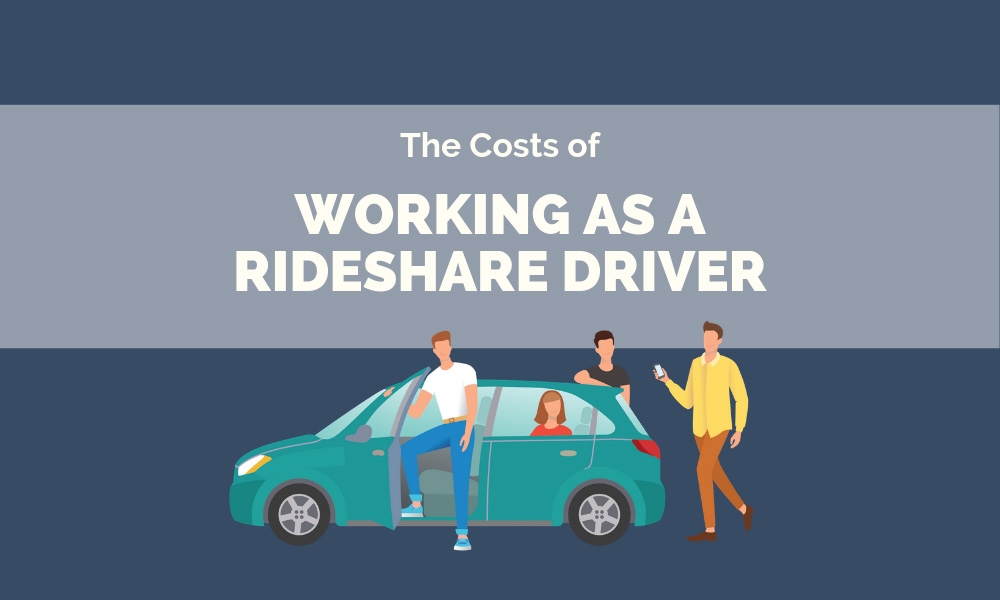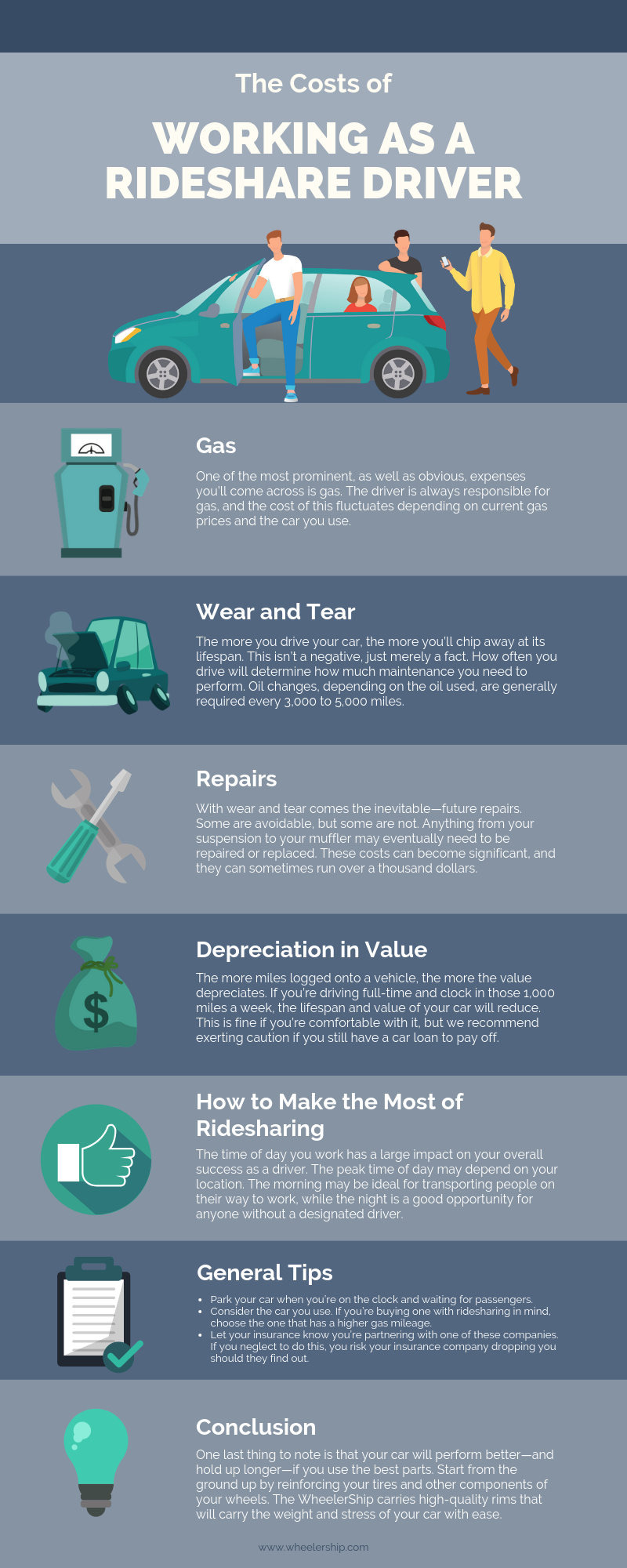
Becoming a rideshare driver is a popular way to earn a supplemental income in today’s economy—some people even do it as their full-time job. It can be relatively easy to start, and you’re ultimately your own boss. If you have a safe vehicle and insurance, you can start working. Before you do, however, you should evaluate everything that goes into becoming a driver. Like anything else in life, there are always more things to uncover beneath the surface.
It was reported in 2018 that the average hourly income for Lyft and Uber drivers hovers between $8.55 and $11.77—this is after the companies take their cut. Since all related expenses fall on your shoulders, you should calculate how much of that is truly profit. We aren’t saying there isn’t any profit to gain, but it’s still good to be aware of what you’ll have to put into the job. First, we’ll look at some of the potential expenses you can accrue when you work with a rideshare service.
Gas
One of the most prominent, as well as obvious, expenses you’ll come across is gas. The driver is always responsible for gas, and the cost of this fluctuates depending on current gas prices and the car you use. Though gas prices are always prone to change, how much gas your car consumes generally stays about the same, except for a few factors. Some of these factors include the following:
- Your car uses the most fuel while it warms up, so if you consistently start your car up and do not travel a far distance, it will eat up fuel at a faster rate.
- Your tires, as well as their alignment, can affect the mileage. When the air in your tires is low, they create friction which causes more fuel to be used.
- More fuel will be used if your car bears an excessive amount of weight.
- Excessive breaking and acceleration creates an aggressive change in gears, which can cause your fuel efficiency to drop by as much as a third.
Wear and Tear
The more you drive your car, the more you’ll chip away at its lifespan. This isn’t a negative, just merely a fact. How often you drive will determine how much maintenance you need to perform. Oil changes, depending on the oil used, are generally required every 3,000 to 5,000 miles. Full-time Uber and Lyft drivers may put over 1,000 miles on their car each week—that’s one oil change a month. If you pay $40 for your oil change, that’s nearly $500 a year on that alone.
Other car maintenance you should perform regularly includes the following:
- Filling and rotating tires
- Replacing the air filter
- Getting regular washes to prevent rust and corrosion
- Topping off fluids, such as coolant and windshield wiper fluid
Eventually, you’ll have to replace certain parts of your car. One of the most common is your tires. Once the tread wears down, you’ll have to replace them. If you don’t, you risk the safety of both yourself and your passengers. Other parts that will need eventual replacement include windshield wipers and your battery.
Repairs
With wear and tear comes the inevitable—future repairs. Some are avoidable, but some are not. Anything from your suspension to your muffler may eventually need to be repaired or replaced. As we know, these costs can become significant, and they can sometimes run over a thousand dollars. You shouldn’t let this put you completely off the job, as this is a risk that comes with any kind of driving; however, it’s something to keep in mind.
Depreciation in Value
One other thing to note is the more miles logged onto a vehicle, the more the value depreciates. If you’re driving full-time and clock in those 1,000 miles a week, the lifespan and value of your car will reduce. This is fine if you’re comfortable with it, but we recommend exerting caution if you still have a car loan to pay off. You want to avoid owing more than your car is worth.
How to Make the Most of Ridesharing
The time of day you work may have a large impact on your overall success as a driver. The peak time of day may depend on your location. The morning may be ideal for transporting people on their way to work, while the night is a good opportunity for anyone without a designated driver. The type of people you’d prefer to work with may also help determine when you choose to work.
General Tips
If you’ve taken note of everything we’ve outlined and would like to move forward with this endeavor, we have a few additional pieces of advice that we want to give you. There are multiple factors that will help you achieve success, and we want to help you make the most of them. Check out the following additional tips to be a successful rideshare driver:
- Park your car when you’re on the clock and waiting for passengers. We don’t recommend driving around while not getting paid, as this will impact your vehicle’s lifespan and fuel efficiency.
- If you have the option, try to consider the car you use. If you’re buying one with ridesharing in mind, or you own more than one, choose the one that has a higher gas mileage.
- Let your insurance know you’re partnering with one of these companies. If you neglect to do this, you risk your insurance company dropping you should they find out.
- Make sure to pay attention to your work-life balance, especially if this serves as your second job. Determine certain times where you have the app open and others where you put it away. It’s easy to become a workaholic when your work is as easy as opening an app and grabbing your keys, but be sure to give yourself time to rest.
- Be aware that what these companies charge, as far as fare goes, is subject to change. Be prepared for it to fluctuate from time to time.
Conclusion
One last thing to note is that your car will perform better—and hold up longer—if you use the best parts. Start from the ground up by reinforcing your tires and other components of your wheels. The WheelerShip carries high-quality rims that will carry the weight and stress of your car with ease. Whether you need Chevy Malibu rims or Honda Civic ones, we have it all. We know that with your skill and knowledge, you’ll be the best driver you can be.

F


